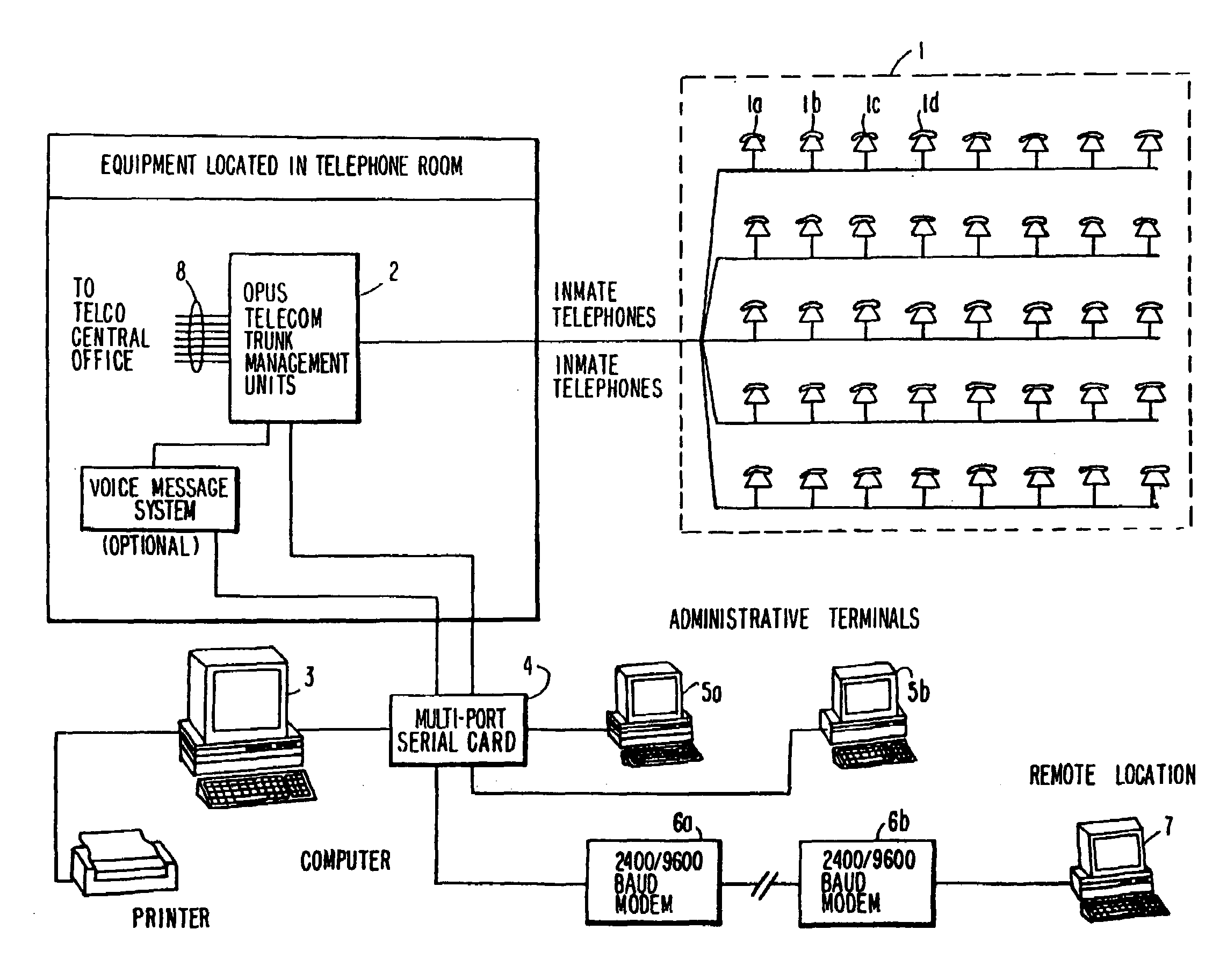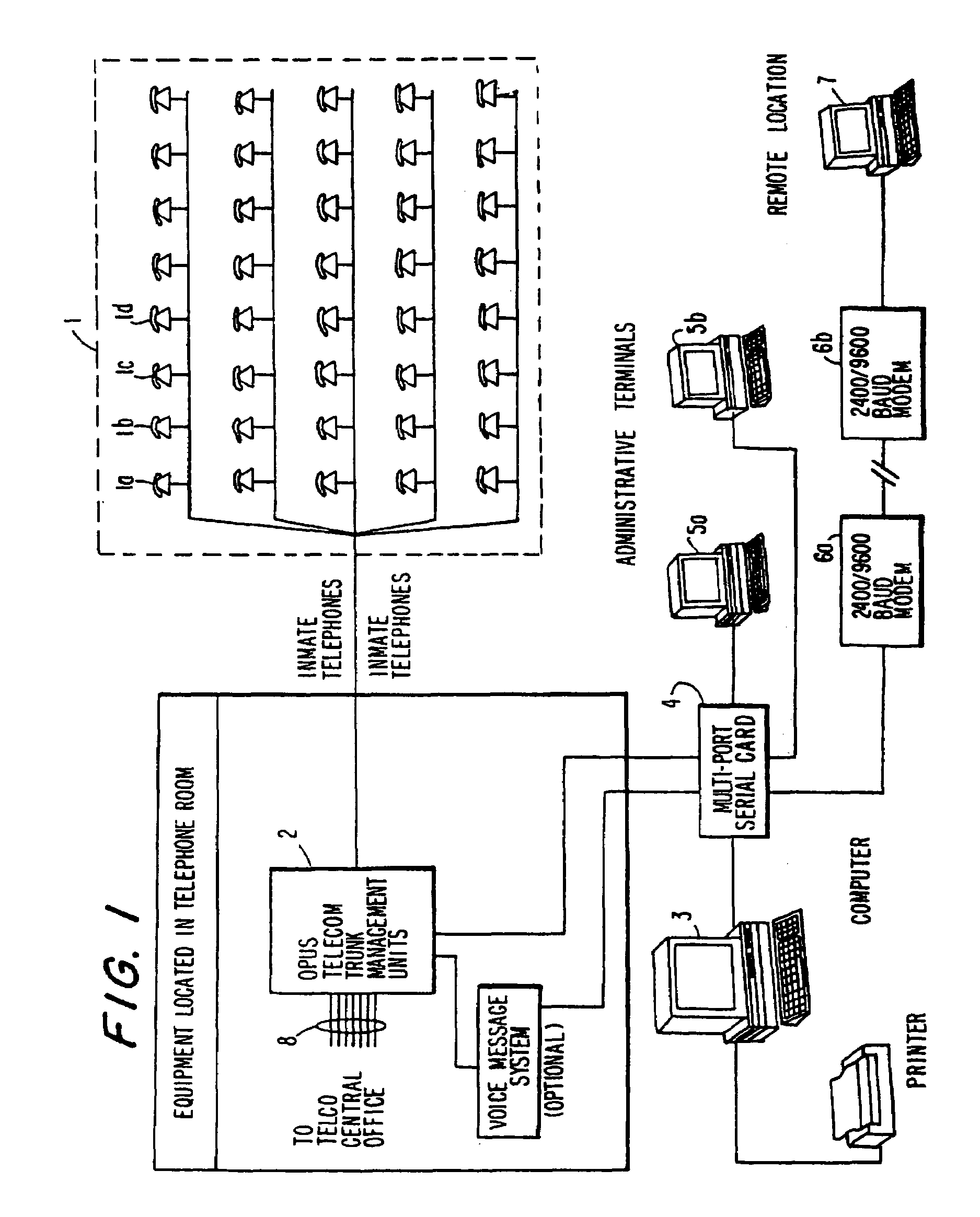Computer-based method and apparatus for controlling, monitoring, recording and reporting telephone access
- Summary
- Abstract
- Description
- Claims
- Application Information
AI Technical Summary
Benefits of technology
Problems solved by technology
Method used
Image
Examples
Embodiment Construction
[0040]The preferred embodiment(s) will be described with reference to prison based call management. This, however, should not be viewed as limiting, since the invention is also applicable in other institutional settings such as military bases, schools, mental institutions and business organizations.
[0041]Referring now to FIG. 1, a call management system manages calls from a plurality of inmate telephones 1. A TMU 2 controls the connection of individual inmate telephones (for example 1a) to outside telephone lines 8, and electronically monitors connected calls. A TMU 2 can optionally contain (and / or be connected to external) voice messaging or voice synthesis equipment, to facilitate features such as over-the-phone voice prompting, voice mail, or any voice activated, responsive or interactive telephone feature. For example, an inmate could enter his / her PIN into a telephone 1 keypad, and then, access his / her account. In turn, voice equipment associated with or contained within the TM...
PUM
 Login to View More
Login to View More Abstract
Description
Claims
Application Information
 Login to View More
Login to View More - R&D
- Intellectual Property
- Life Sciences
- Materials
- Tech Scout
- Unparalleled Data Quality
- Higher Quality Content
- 60% Fewer Hallucinations
Browse by: Latest US Patents, China's latest patents, Technical Efficacy Thesaurus, Application Domain, Technology Topic, Popular Technical Reports.
© 2025 PatSnap. All rights reserved.Legal|Privacy policy|Modern Slavery Act Transparency Statement|Sitemap|About US| Contact US: help@patsnap.com



